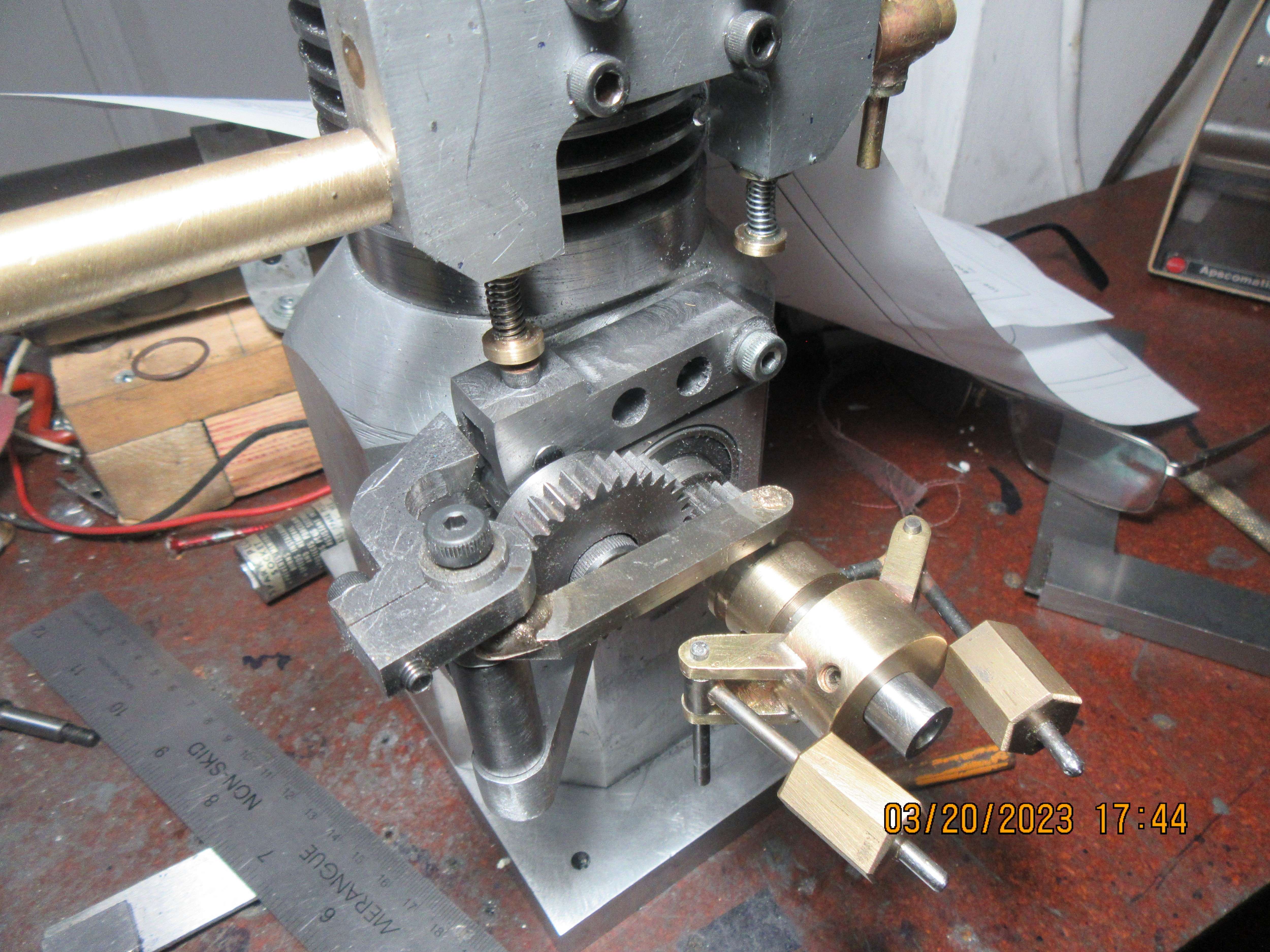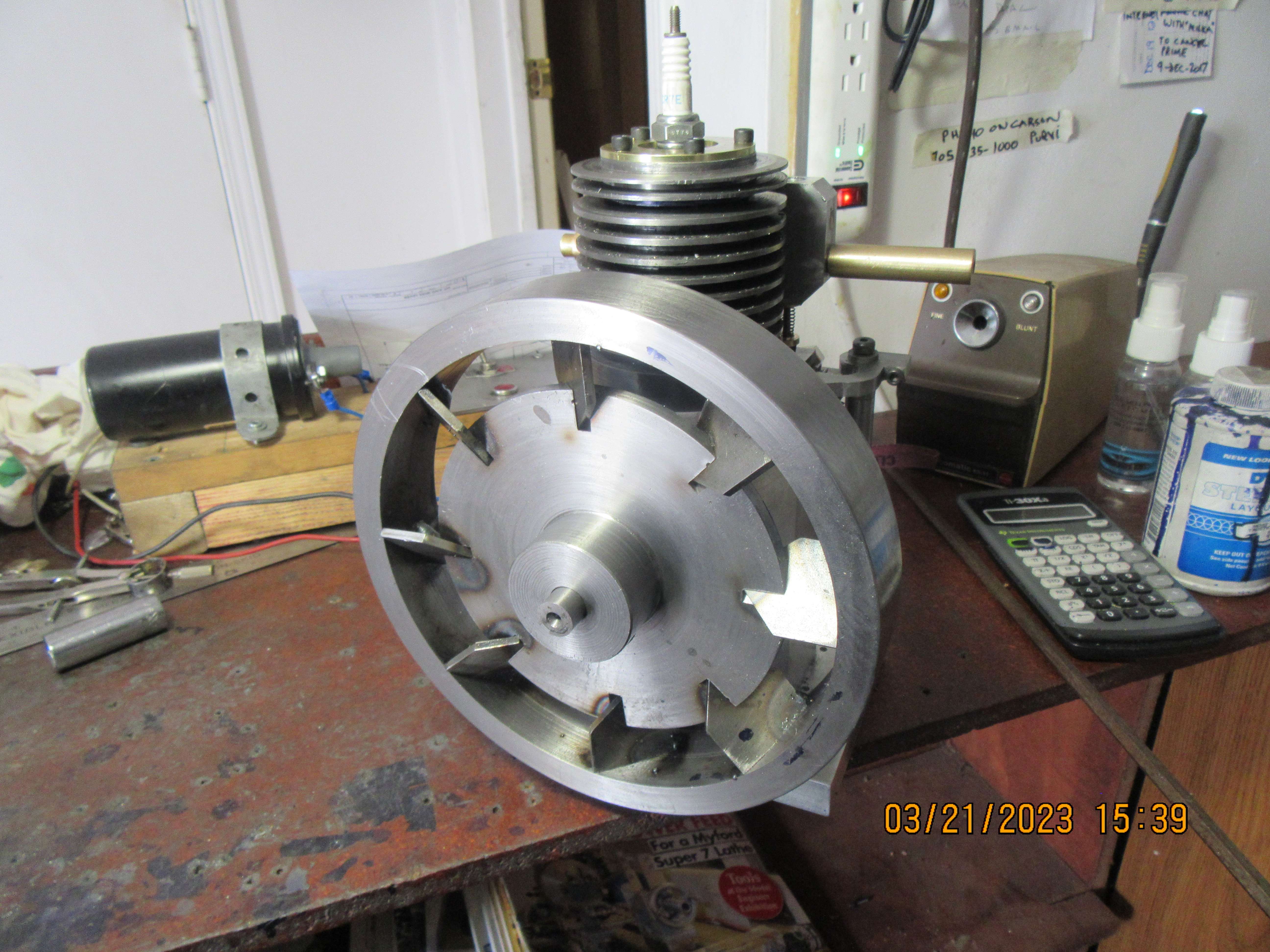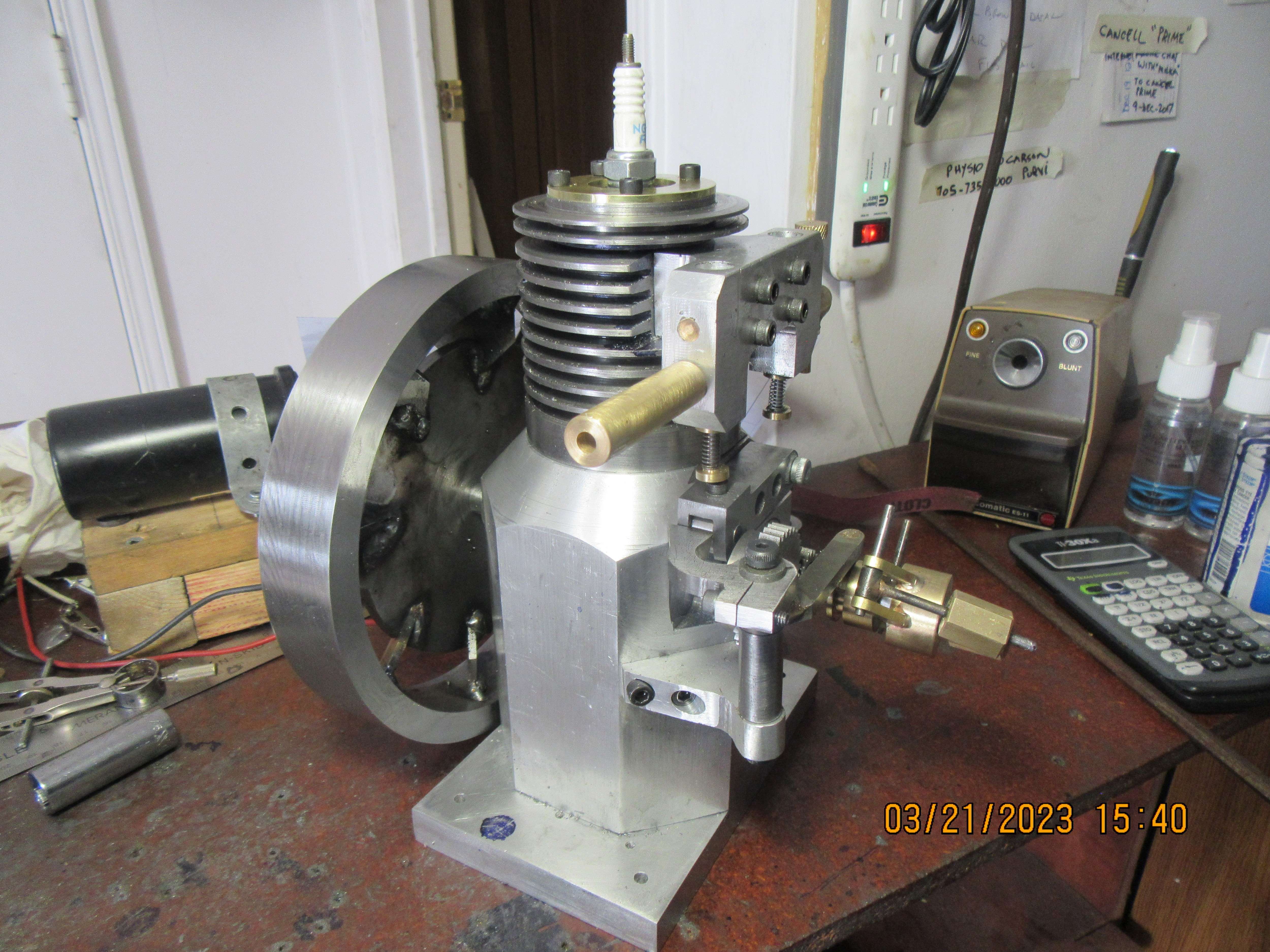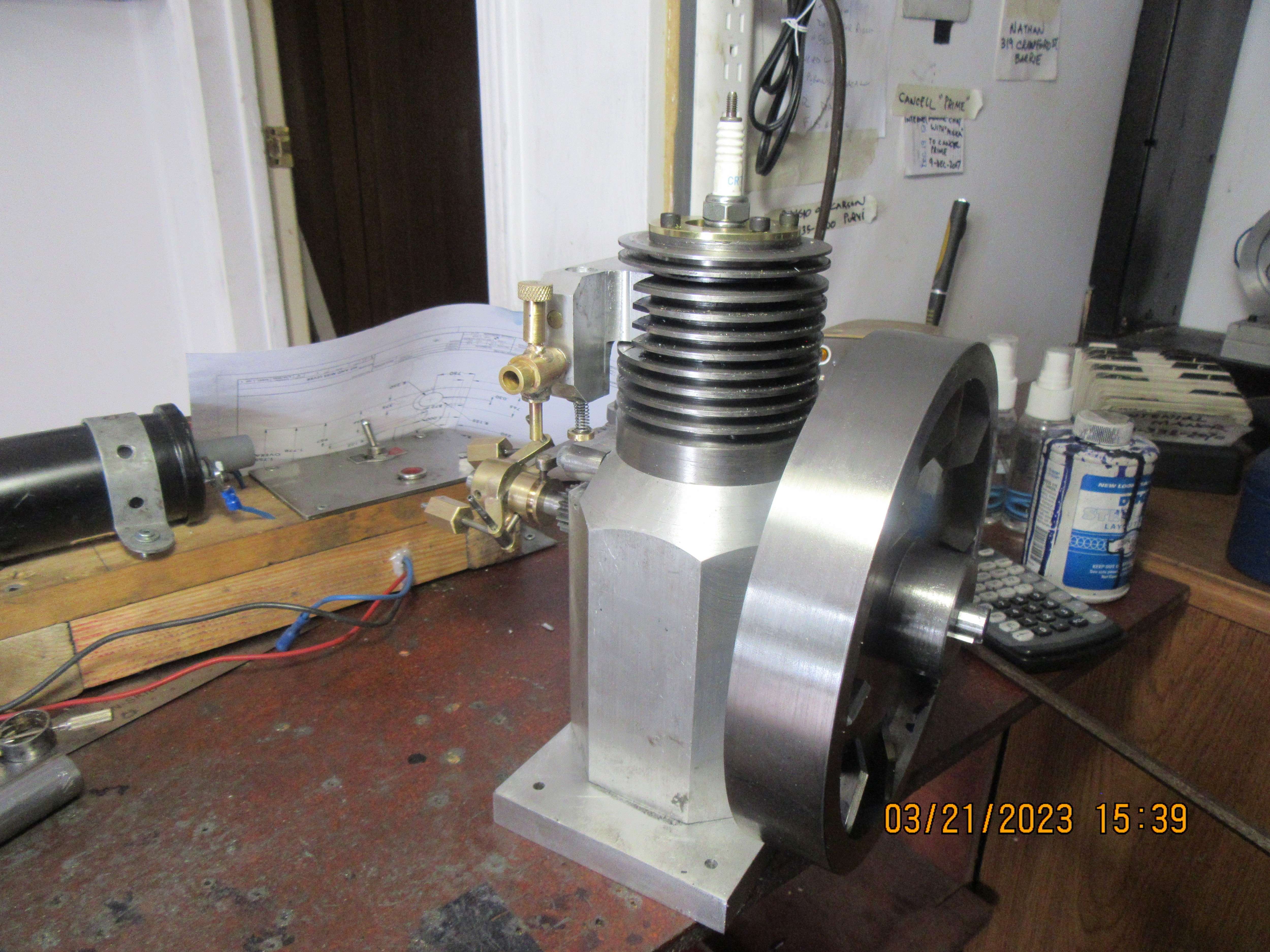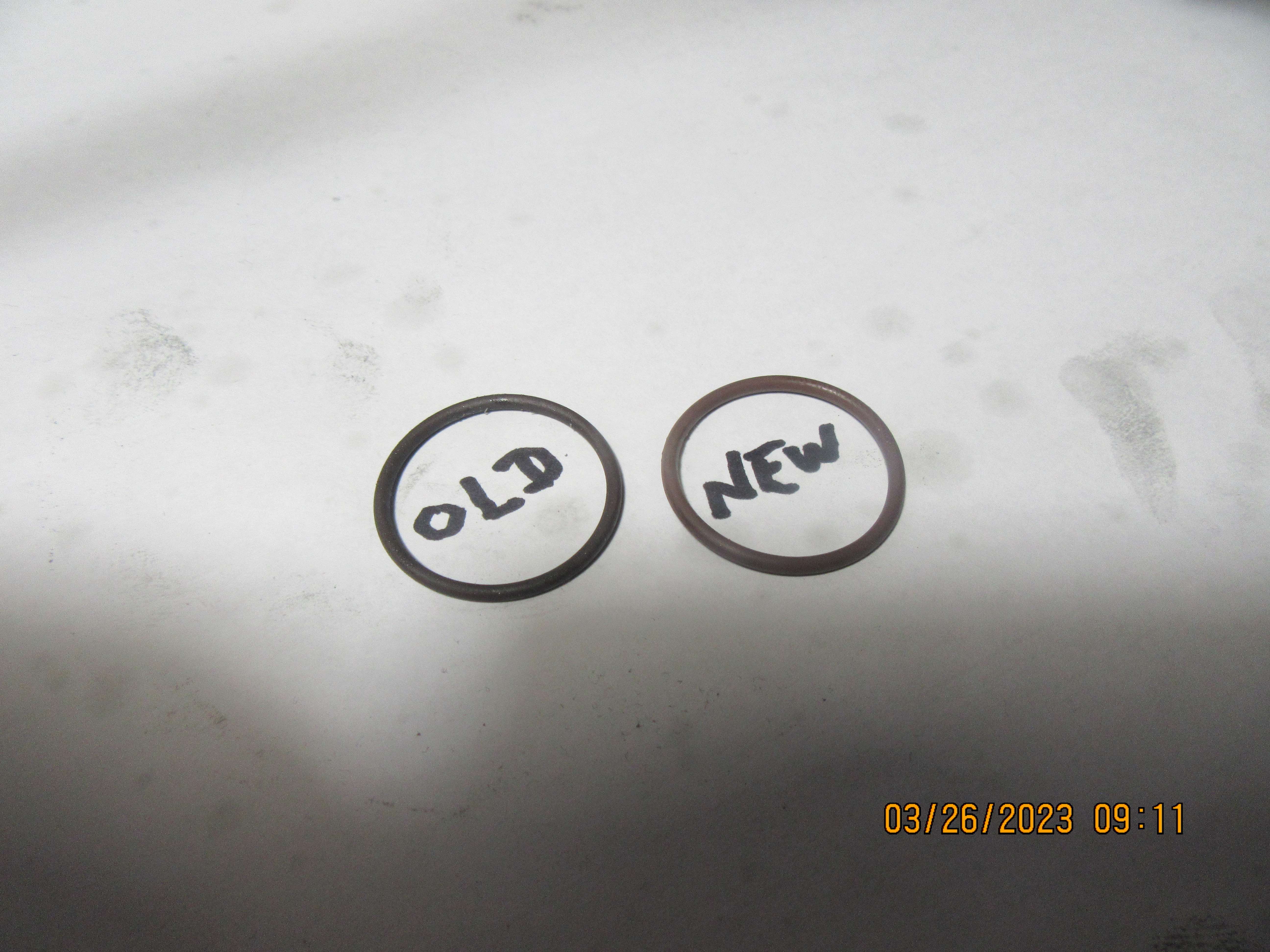Today was a first try to run the engine. No go---no firing. Time for diagnostics. Pulled off the manifold, made up a blanking plate to cover the holes in the side of the cylinder, then bolted the blanking plate back on with a gasket. Pulled off the cylinder head and stuck my thumb over the top of the cylinder. When I did this and flipped the flywheel over, the engine would "bounce back" from compression. Tried it again with a layer of oil over top of the piston--engine bounced back , but not enough difference to indicate a piston ring not sealing. Took a good look at the o-ring head gasket and determined that it hadn't been flattened equally all around. Sometimes this happens if the head bolts are too long---they bottom out in the cylinder before they really squeeze the head gasket properly for a good seal. Shortened up the cylinder head bolts and retorqued them evenly, ensuring a definite seal at the head gasket. Removed two coils from the intake valve spring. This is a really delicate dance on an atmospheric valve. You need enough spring pressure to close the valve, but not so much pressure that the spring overcomes the atmospheric pressure which opens the valve. Will try again tomorrow, after rechecking valve and ignition timing. I have a can of ether which can be a good thing to convince the engine to fire. Once the engine fires a couple of dozen times, the valves seal much better. My theory on this is that the steel valve deforms the brass valve seats enough to give a much better seal.
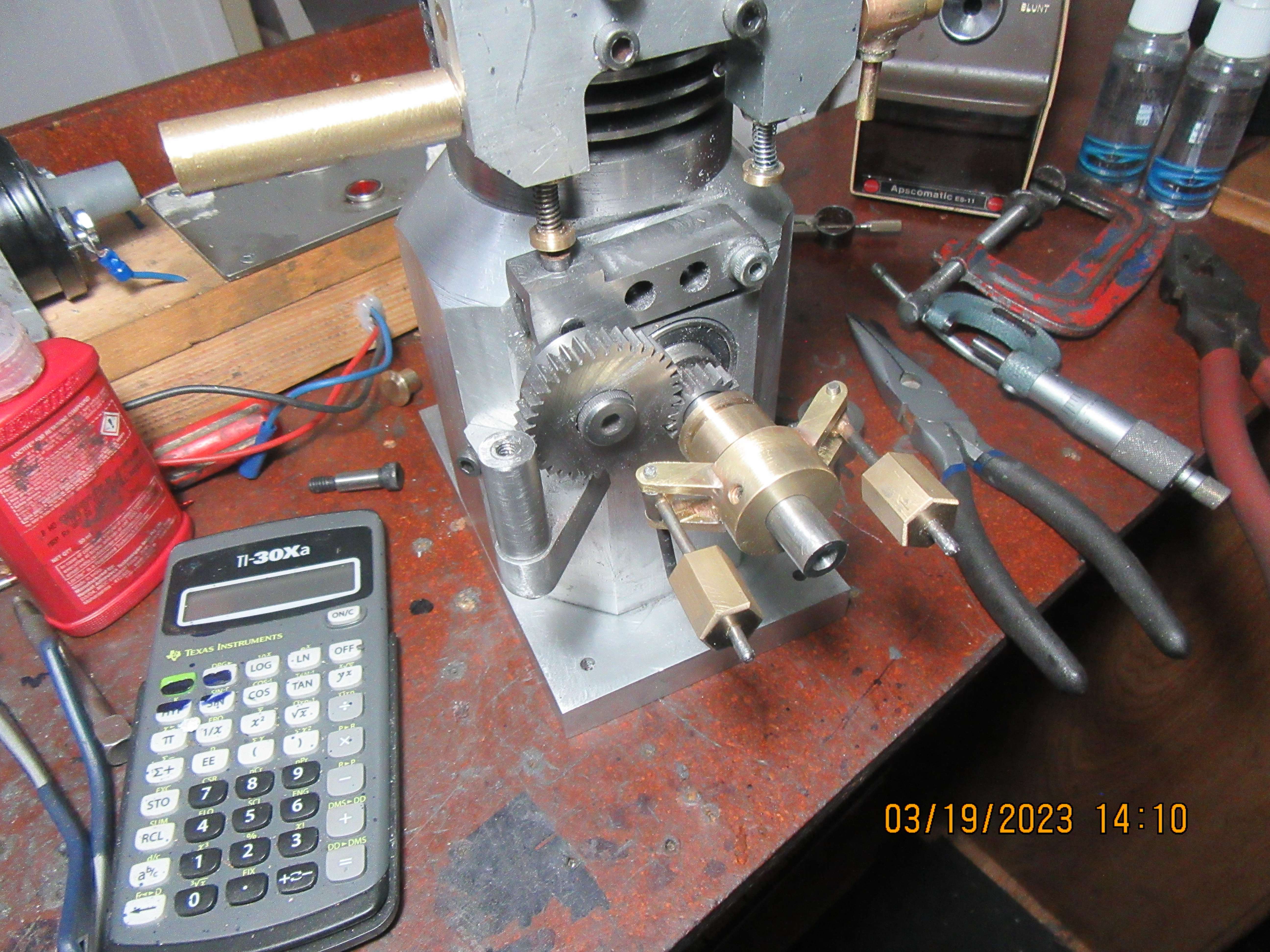







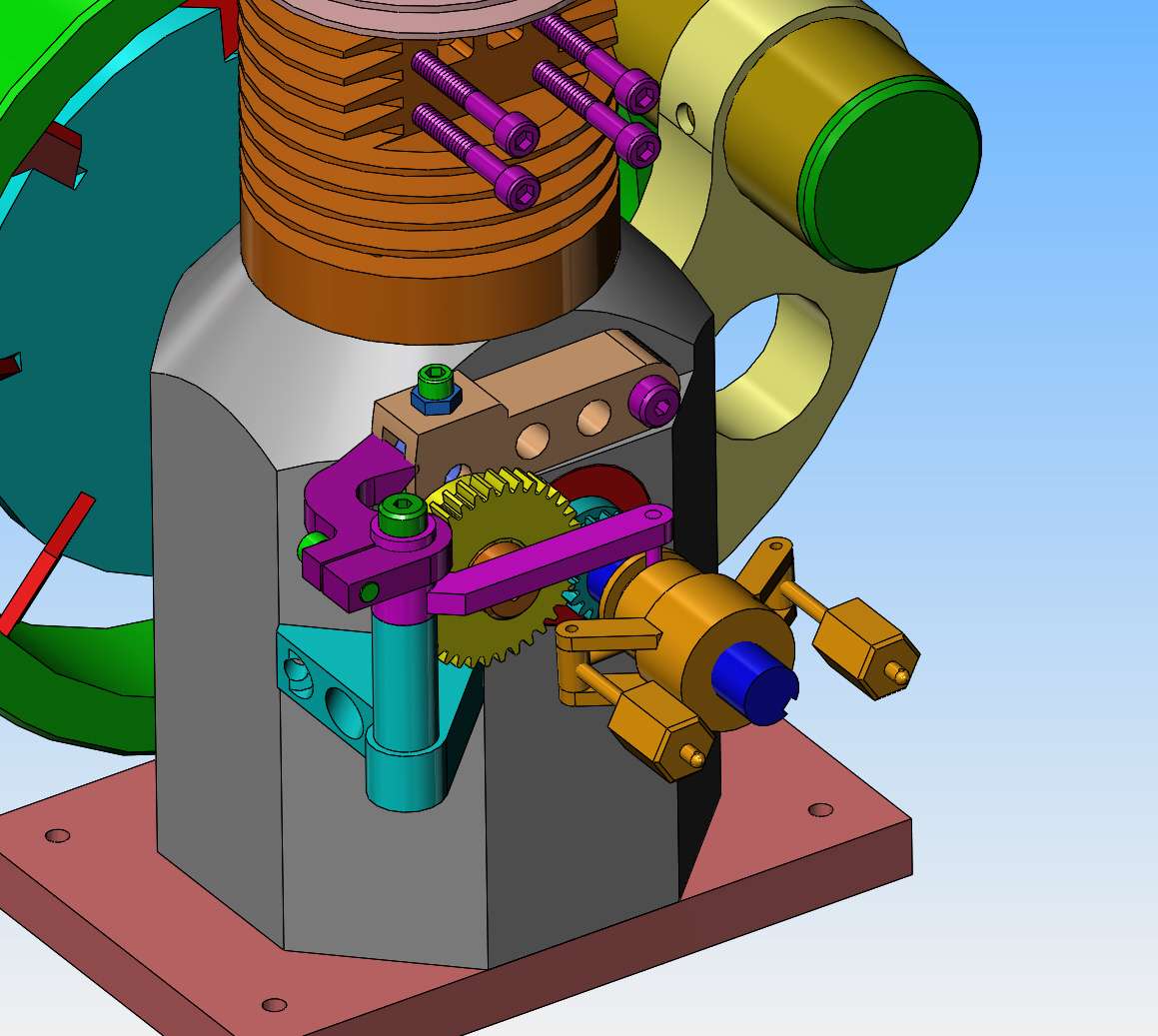















![Learning Revit MEP 2014 [Online Code]](https://m.media-amazon.com/images/I/61vjG-sEuQL._SL500_.jpg)






















![DreamPlan Home Design and Landscaping Software Free for Windows [PC Download]](https://m.media-amazon.com/images/I/51kvZH2dVLL._SL500_.jpg)
![MeshMagic 3D Free 3D Modeling Software [Download]](https://m.media-amazon.com/images/I/B1U+p8ewjGS._SL500_.png)













![Learning AutoCAD Civil 3D 2014 [Online Code]](https://m.media-amazon.com/images/I/51F3yi9fokL._SL500_.jpg)





